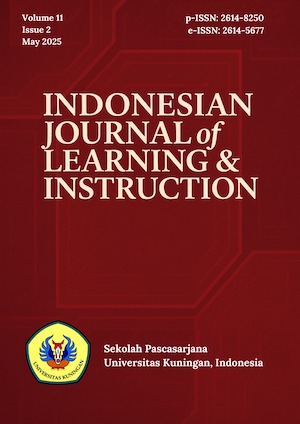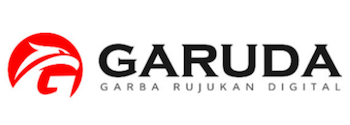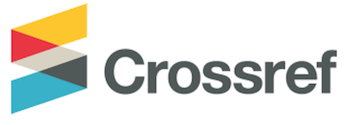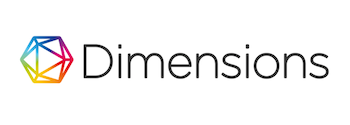DIVERGENT THINKING IN A STANDARDIZED TEST
Abstract
In dealing with standardized tests, including TOEFL test, there is a common propensity for test-takers to adopt convergent thinking which is a cognitive process in retrieving a pre-existing answers using concepts, knowledge, and understandings. On the contrary, the use of divergent thinking in standardized tests is scarce because the test-takers do not create new knowledge or ideas during the test. This study sought whether higher divergent thinking ability could affect TOEFL score. A case study was employed to gather the data from 143 respondents (divided into two groups: each 73 and 70 students) whom of which were 3rd year Economics students at Syiah Kuala University. Guilford’s Alternative Uses Test was used as the instrument where the students should name the functions of a stone in 5 minutes. The total of 538 responses from group A and 366 from group B were obtained from this test. The data were analyzed using the descriptive statistics in terms of its originality. The results showed that the group whose ability in divergent thinking is higher could achieve average score reaching 523, while those with less ability in employing divergent thinking could only attained 477 in average. The findings imply that in teaching TOEFL preparation or other standardized tests, divergent teaching technique needs to be employed as the instructors should expands students’ thinking by not only limiting it to Question-Answer technique.References
Acar, S., & Runco, M. (2012). Psychoticism and creativity: A meta-analytic review. Psychology of Aesthetics, Creativity, and the Arts, 6(4), 341-350.
Ananda, R. (2016). Problems with Section Two ITP TOEFL Test. Studies in English and Education, 3(1), 37-51.
Ansburg, P. I. (2000). Individual differences in problem solving via insight. Current Psychology, 19(2), 143-146.
Basadur, M., & Finkbeiner, C. T. (1985). Measuring preference for ideation in creative problem solving training. The Journal of applied behavioral science, 21(1), 37-49.
Basadur, M., Wakabayashi, M., & Graen, G. B. (1990). Individual problem solving styles and attitudes toward divergent thinking before and after training. Creativity Research Journal, 3(1): 22-32.
Beaty, R. E., Nusbaum, E. C., & Silvia, P. J. (2014). Does insight problem solving predict real-world creativity? Psychology of Aesthetics, Creativity, and the Arts, 8(3), 287-292.
Bennett, S. N. (1973). Divergent thinking abilities: A validation study. British Journal of Educational Psychology, 43.
Birenbaum, M., & Tatsuoka, K. K. (1987). Open-ended versus multiple choice response formats it does make a difference for diagnostic purposes. Applied Psychological Measurement, 11(4), 385-395.
Boden, M. (2004). The creative mind (3rd ed.). London: Weidenfeld and Nicolson.
Brown, T. (2009). Change by design: How design thinking transforms organizations and inspires innovation. New York: Harper Collins.
Bryan, C. (2008). The importance of divergent thinking in engineering design. Proceedings of the 2008 American Society for Engineering Education Pacific Southwest Annual Conference.
Chermahini, S. A., Hickendorff, M., & Hommel, B. (2012). Development and validity of a Dutch version of the remote associates task: An item-response theory approach. Thinking Skills and Creativity, 7, 177-186. doi:10.1016/j.tsc.2012.02.003.
Cropley, A. (2006). In Praise of Convergent Thinking. Creativity Research Journal, 18(3), 391-404. doi: 10.1207/s15326934crj1803_13.
Diefes-Dux, H. A., Moore, T., Zawojewski, J., Imbrie, P. K., & Follman, D. (2004). A framework for posing open-ended engineering problems: Model-eliciting activities. In Frontiers in Education, FIE2004, 34th Annual.
Dippo, C. (2013). Evaluating the alternative uses test of creativity. In the Proceedings of the National Conference On Undergraduate Research (NCUR). La Crosse, University of Wisconsin.
Farrell. G. M. (2001). The changing faces of virtual education. Canada: The Commonwealth of Learning.
Ge, X., & Land, S. M. (2003). Scaffolding students' problem-solving processes in an ill-structured task using question prompts and peer interactions. Educational Technology Research and Development, 51(1), 21-38.
Ghonsooly , B., & Showqi, S. (2012). The effects of foreign language learning on creativity. English Language Teaching, 5(4), 161-167.
Guildford, J. P., Christensen, P. R., Merrifield, P. R., & Wilson, R. C. (1978). Alternate uses: Manual of instructions and interpretation. Orange, CA: Sheridan Psychological Services.
Guilford, J. P. (1971). The nature of human intelligence. New York: McGraw-Hill.
Hoffman, B. (1962). The tyranny of testing. New York; Collier Books.
Howard, T. J., Stephen J. C, & Dekoninck, E. (2008). Describing the creative design process by the integration of engineering design and cognitive psychology literature. Design studies 29(2), 160-180.
Jones, L. L., & Estes, Z. (2015). Convergent and divergent thinking in verbal analogy. Thinking & Reasoning, 21(4), 473-500. doi: 10.1080/13546783.2015.1036120.
Jones, T., Caulfield, L., Wilkinson, D., & Weller, L. (2011). The relationship between nonclinical schizotypy and handedness on divergent and convergent creative problem-solving tasks. Creativity Research Journal, 23(3), 222-228.
Kathleen, C. (1991). Teaching thinking skills. Northwest Regional Educational Laboratory, School Improvement Program.
Kenett, Y. N., Anaki, D., & Faust, M. (2014). Investigating the structure of semantic networks in low and high creative persons. Frontiers in Human Neuroscience, 407.
Kwon, O. H., Park, J. H., & Park, J. S. (2006). Cultivating divergent thinking in mathematics through an open-ended approach. Asia Pacific Education Review, 7(1), 51-61.
Madhuri, M. (2015). Development and assessment of engineering design competencies. Unpublished doctoral dissertation.
Niu, L, Linda S. Horenstein, B., & Garvan, C. W. (2013). Do instructional interventions influence college students’ critical thinking skills? A meta-analysis. Educational Research Review, 9, 114-128.
Nusbaum, E. C., & Silvia, P. J. (2011). Intelligence are intelligence and creativity really so different? Fluid intelligence, executive processes, and strategy use in divergent thinking. Intelligence, 39(1), 36-45.
Phillips, D. (2001). Longman complete course for the TOEFL test: Preparation for computer and paper test. White Plains, New York: Longman.
Plucker, J. A., & Renzulli, J. S. (1999). Psychometric approaches to the study of human creativity. In R. J. Sternberg (Eds.), Handbook of creativity. Cambridge, MA: Cambridge University Press.
Powers, D. E., & Kaufman, J. C. (2002). Do standardized multiple-choice tests penalize deep-thinking or creative students? Princeton: Educational Testing Service.
Rossmann, E., & Fink, A. (2010). Do creative people use shorter associative pathways? Personality and Individual Differences, 49(8), 891-895.
Runco, M. A., & Acar, S. (2012). Divergent thinking as an indicator of creative potential. Creativity Research Journal, 24(1), 66-75.
Sternberg, R. J., & Lubart, T. I., (1999). The concept of creativity: Prospects and paradigms. In R. J. Sternberg (Eds.), Handbook of creativitity. New York: Cambridge University Press.
Yoruk, S., & Runco, M. A. (2014). The neuroscience of divergent thinking. Activitas Nervosa Superior, 56, 1-16.









